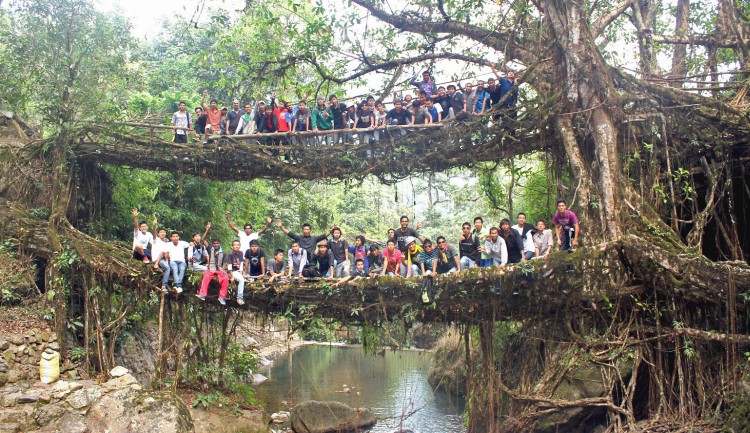Nature is Awesome. We begin exploring the majesty and grandeur of nature with:
The Living Bridges of Cherrapunji, India
Cherrapunji has bridges that are built not with brick and concrete — they are grown! These living bridges or root bridges are a marvel of bio-engineering.
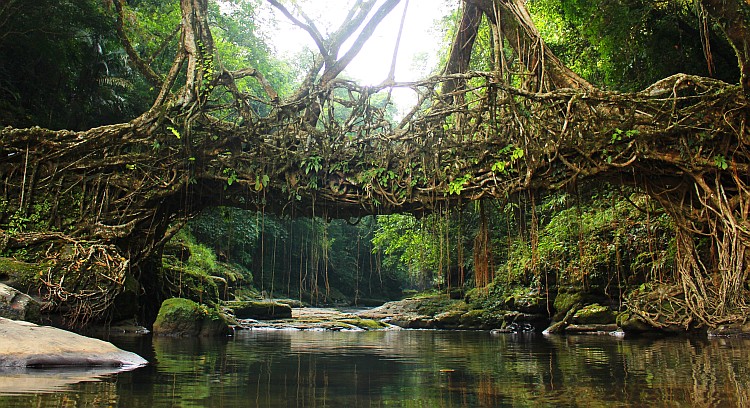
Cherrapunji is located in Northeast India and made it to the Guinness book of world records as the wettest place on Planet Earth, because of the record rainfall it receives throughout the year. (though neighbouring Mawsynram now contests that claim).
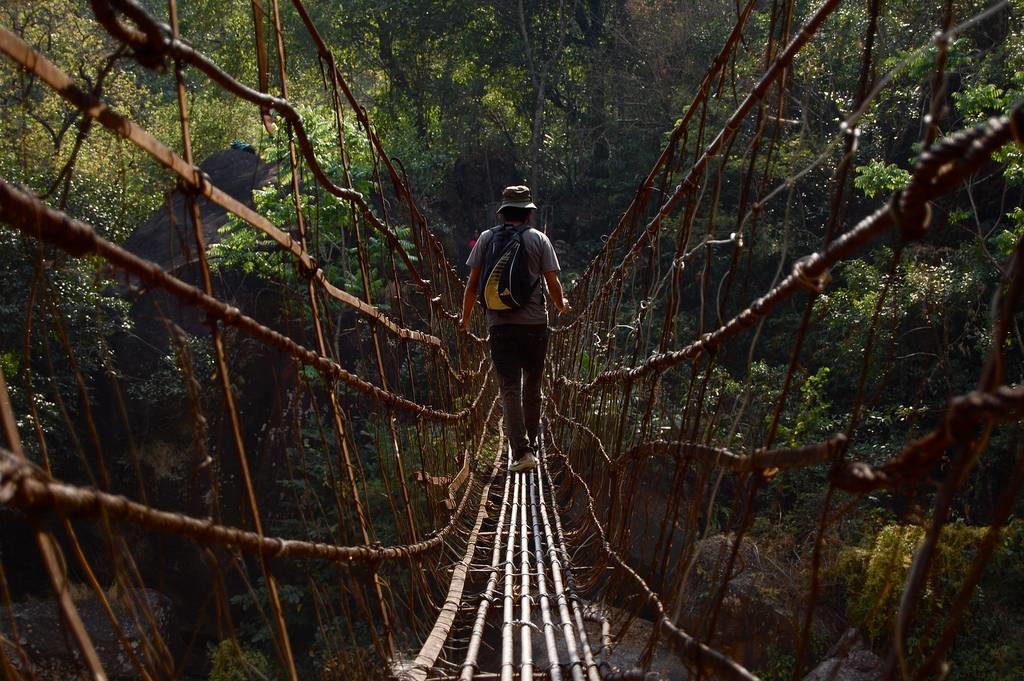
The native Khasi tribe actually “engineers” this sustainable and environmentally friendly architecture without a University degree in Engineering!
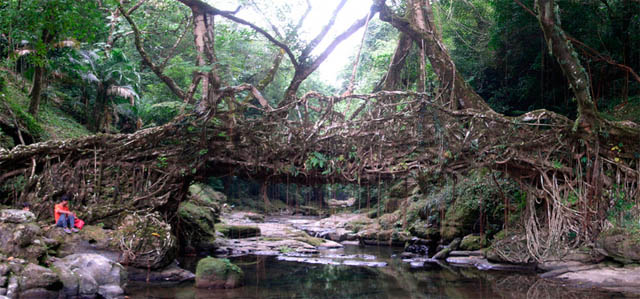
In ancient times, tribals needed to cross rivers and improvised a “bridge” using rubber trees. This technique grew and was perfected over hundreds of years into an enviable art form. Now the villagers of Cherrapunji can “grow” their own bridges at will, as required.
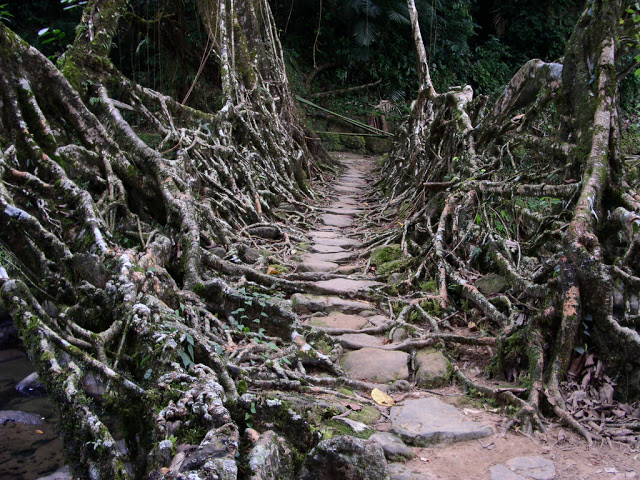
The bridges are built from the roots of a rubber tree – Ficus Elastica which has secondary roots that grow above the surface of the ground and crawl over the earth and boulders. The Khasis learned how to mould, shape and guide the roots to grow in the direction they wanted by using betel-tree trunks, sliced down the middle and hollowed out, to create “root-guidance systems.” This technique forces the tender roots of the rubber tree to grow straight. Such roots make a strong, living bridges in about 10-15 years.
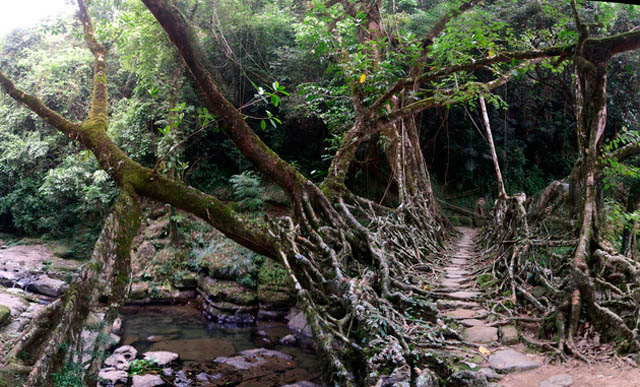
The betel nut trunks prevent the tender roots from fanning out, and instead make them grow straight towards the other side of the rivers or water-streams. When they reach the other side of the river, they take root in the soil. So the roots are literally woven to form a living bridge. Within 10 to 15 years these bridges become strong enough for use.
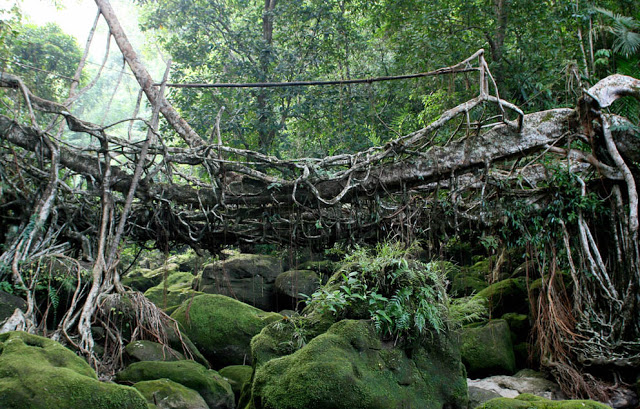
Conventional man-made bridges suffer the ravages of use and grow weaker over time, but because these bridges are alive and the roots are still growing, they actually gain strength over time! With the passage of time, these living bridges become stronger and sturdier.
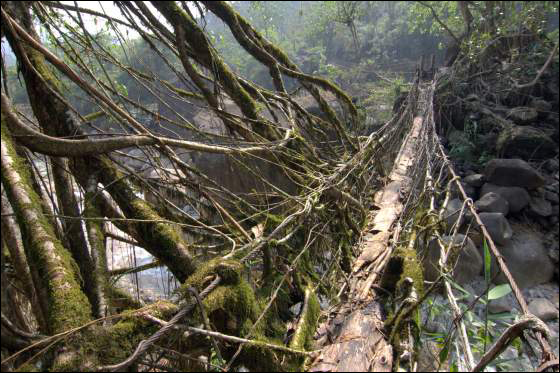
Some older bridges can support the weight of over 50 people. These living bridges can be as long as 100 feet.
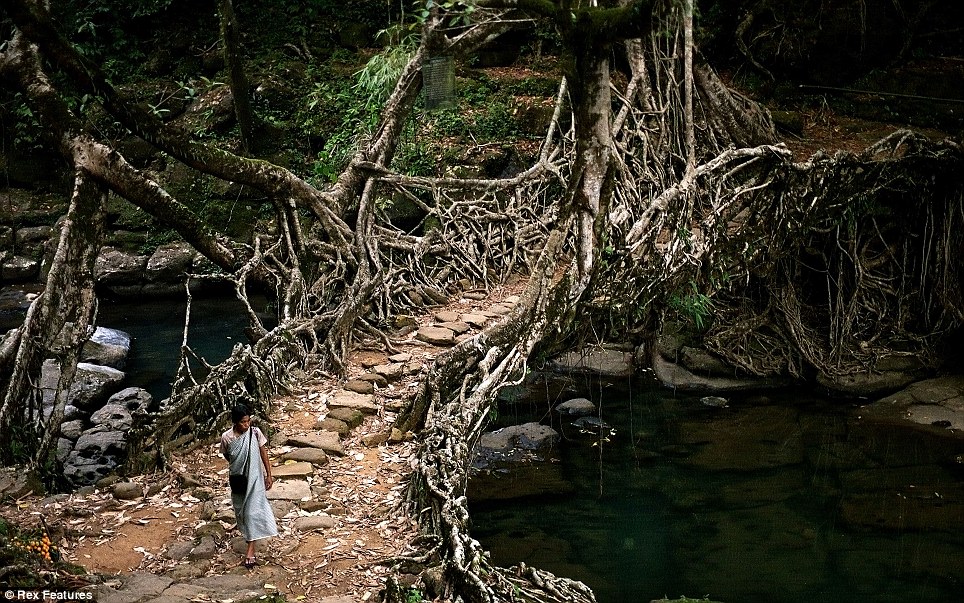
These bridges can also last for centuries. Some of the ancient root bridges in Cherrapunji are used daily by the local people and are estimated to be over 500-years-old.
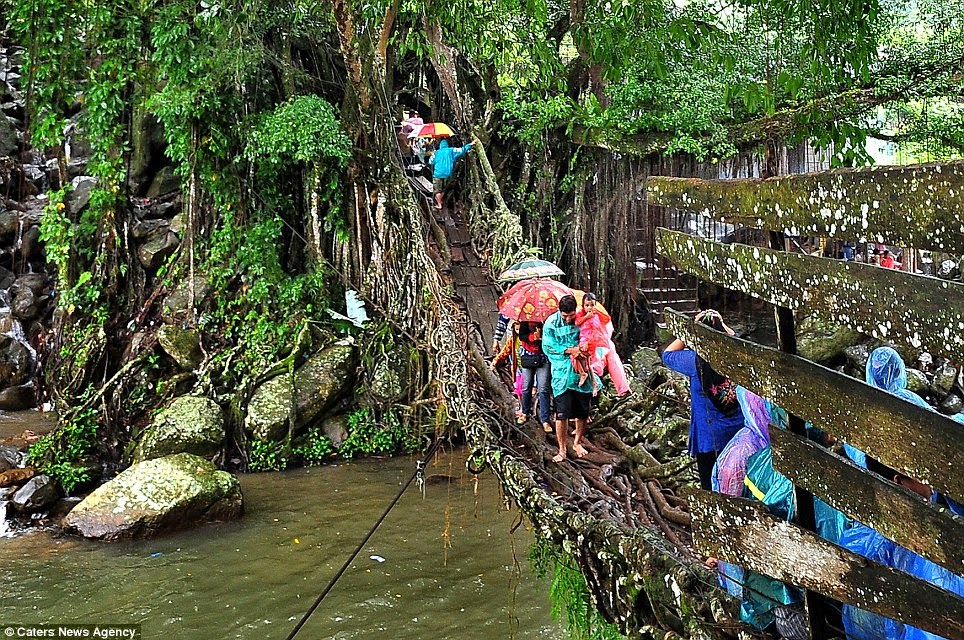
This engineering feat is achieved without the use of single nail!
Even more astonishing is the “Umshiang Double-Decker Root Bridge”. It is believed to be the only one of its kind in the whole world. It has two bridges stacked one over the other!
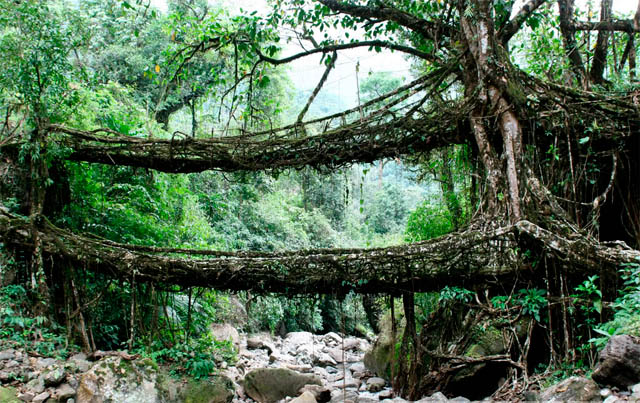
It can be quite challenging to access the double decker bridge. But it is a great attraction to adventure tourists, travellers and hikers who come here from all over the world to experience it first-hand.
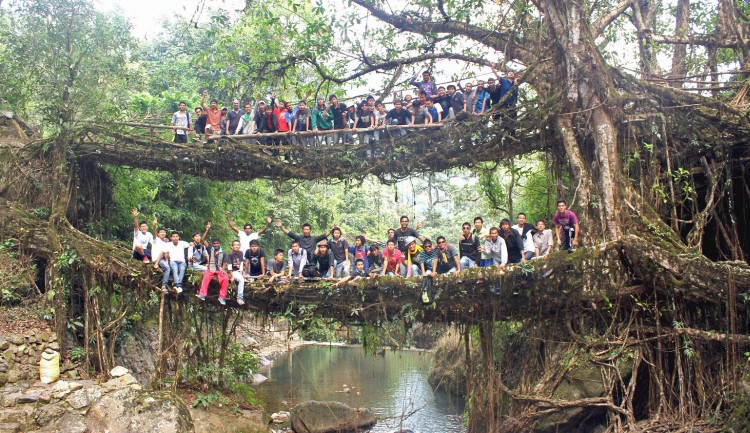
To reach the double decker bridges you need to hike and walk for a few hours in the dense forests of Cherrapunji.
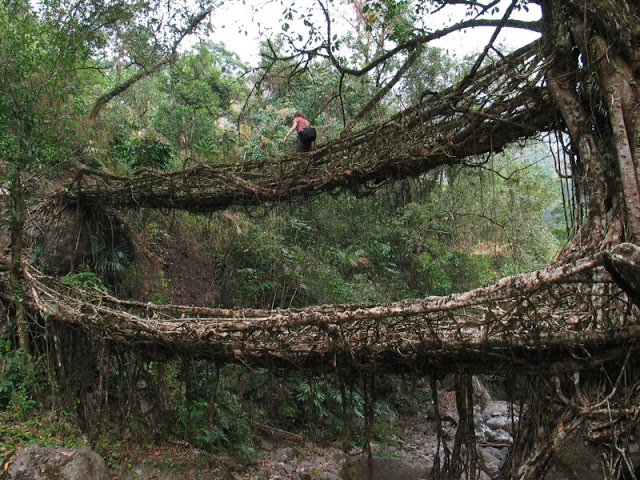
It is said that you have to cross over 3500 steps across hills and rickety rope pathways to reach this beautiful place; but in the end, it is all worth it!
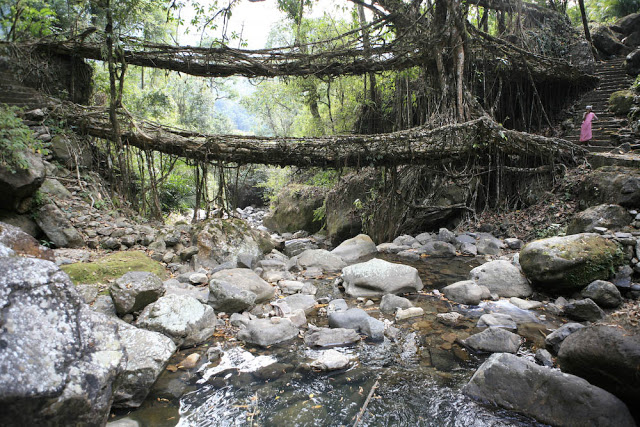
Isn’t it amazing to think of the good things that Nature provides us with?
No multi-million dollar contracts, n0 cement, no concrete, no steel , no substandard materials, no unreliable contractors and no back breaking work to get these bridges functional. Just a lot of energy savings; as people recognize and use the bounties provided by Mother Nature.

